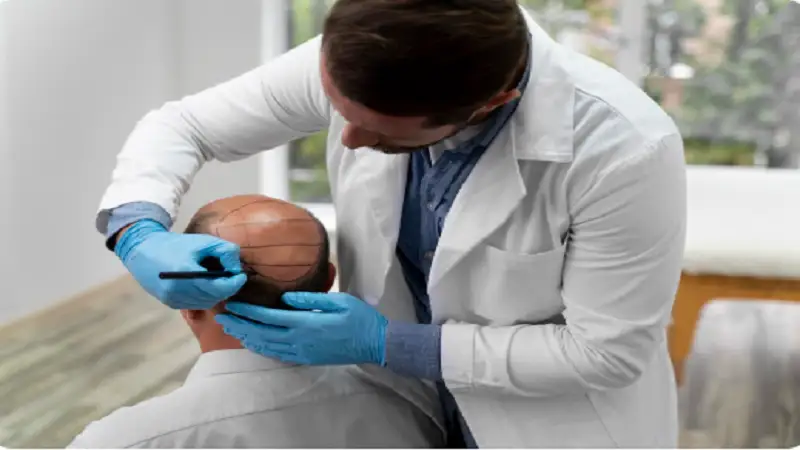Hair loss hits hard – it can dent your confidence and change how you see yourself in the mirror. Whether it’s receding lines, bald spots, or just overall thinning, plenty of people are turning to solutions that actually last. If you’re considering options abroad, a hair transplant in Dubai might catch your eye for its mix of advanced techniques and competitive pricing. Let’s break this down, from the nuts and bolts to why this city is a go-to destination.
What Exactly Is a Hair Transplant?
At its core, a hair transplant moves hair from one part of your body to where it’s needed, usually from the back or sides of your head to the front or top. It’s not magic; it’s science using your own follicles to create natural growth. The two main methods are Follicular Unit Extraction (FUE) and Follicular Unit Transplantation (FUT). FUE plucks individual follicles without a big scar, making it popular for quicker recovery. FUT strips a section of scalp and dissects it into units, which can cover larger areas but leave a linear mark.
This isn’t just for men – women with pattern baldness or traction alopecia from tight hairstyles opt in too. It’s permanent because the transplanted hair resists the hormones causing loss. Sessions can graft thousands of hairs, depending on your needs, and results look real as they grow in over months.
Why Dubai Stands Out for Hair Transplants
Dubai’s medical tourism is exploding, and hair restoration is a big part of it. Clinics here use robotic systems like ARTAS for precision, pulling in experts from Turkey, Europe, and the US. The Dubai Health Authority enforces high standards, so you’re not risking subpar work. Costs? Expect 10,000-25,000 AED per session, often cheaper than in the West while matching quality.
What really sets it apart is the convenience. Fly in, get treated, and chill in luxury hotels or on beaches during downtime. Many places offer packages with airport transfers, consultations, and even PRP therapy boosts. It’s discreet too – no long waits, and English is widely spoken, easing things for internationals.
How the Procedure Works Step by Step
It all kicks off with a consult: photos, scalp analysis, and a plan tailored to your hair type and loss pattern. On the day, you’re numbed locally – no general anesthesia needed, so it’s like a long dental visit, lasting 4-8 hours.
For FUE, the surgeon extracts follicles one by one using a tiny punch tool, then makes micro-slits in the bald area and plants them. FUT involves removing a strip, closing the donor site, and grafting the units. Some add stem cell injections for better take. You’re awake, maybe watching TV, and head home after. Multiple sessions might be needed for full coverage, spaced months apart.
Recovery: What to Expect and How to Handle It
Recovery is straightforward but requires patience. The first few days bring redness, scabbing, and mild swelling – nothing a hat can’t hide. Wash gently as instructed, avoid scratching, and skip strenuous stuff for a week. Transplanted hairs shed initially (shock loss), but new growth starts in 3-4 months, peaking at a year.
Tips for smooth sailing: sleep propped up, use prescribed shampoos, and steer clear of sun or saunas early on. Most return to work in 3-5 days, especially with FUE’s minimal downtime. Follow-ups ensure grafts are thriving, and side effects like itching fade quickly.
The Benefits and Who It’s Best For
Here’s the thing: a successful transplant restores not just hair but self-assurance. It grows like your natural stuff – you can cut, style, or dye it. Studies show 90% graft survival rates with skilled hands, leading to high satisfaction. It’s ideal for those with stable loss patterns, good donor hair, and realistic expectations. Ages 25+ are common, but earlier if loss is aggressive.
Women benefit from it for thinning crowns, and it’s increasingly popular for beards or eyebrows. Long-term, it beats wigs or topicals, saving money over time. Plus, it addresses emotional tolls, like anxiety in social scenes.
Risks, Costs, and Important Considerations
No procedure is foolproof. Risks include infection, poor growth if aftercare slips, or donor area thinning. Scarring is minimal with FUE, but FUT’s line might show if the hair is short. Not everyone’s a candidate – conditions like alopecia areata might not respond.
In Dubai, factor in travel time if you’re coming from afar, and verify surgeon credentials via reviews or before-and-after photos. Costs climb with graft numbers; budget for add-ons like medications. It’s rarely covered by insurance unless tied to injury. Alternatives? Minoxidil or finasteride for milder cases, but transplants offer permanence.
Wrapping Up: Time to Take the Leap?
If hair loss is weighing you down, a transplant could flip the script. Dubai delivers expertise in a vibrant setting, making the process less intimidating. Research clinics, get personalized advice, and think about your lifestyle. Countless people regain their stride post-procedure – it might just do the same for you.
View More: Fapelli
